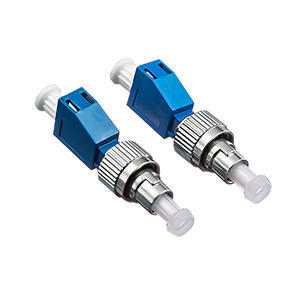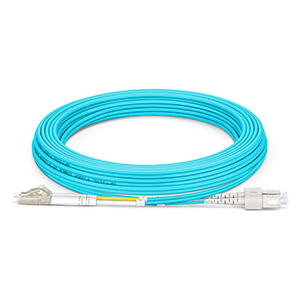Fiber patch cords undoubtedly play an important role in fiber optic networks. This article will explore the minimum length requirements of fiber patch cords. We will first define the physical characteristics and material composition of fiber patch cords and explain how they work in fiber optic networks. Next, we will explain the provisions of the main fiber optic standards on the length of fiber patch cords and analyze the minimum length restrictions and reasons in different standards.
We will explain the problems that may arise if the fiber patch cord length is too short and introduce the key technical indicators that affect the minimum length requirements. In addition, we will list the common minimum length selection recommendations for fiber patch cords and analyze the trade-offs of the optimal patch cord length in different application scenarios. Finally, we will explore the relationship between fiber patch cord length and transmission quality, loss, etc., and explain how to improve network performance by optimizing patch cord length.
Fiber patch cord concept
Let me introduce you to the basic concept of fiber patch cords in detail.
Physical characteristics and material composition of fiber patch cords:
Fiber patch cords are short-distance fiber optic connectors used to interconnect fiber optic devices or components. It mainly includes the following parts:
(1) Fiber core:
- Responsible for the transmission of optical signals, usually made of quartz glass material.
- The diameter of the fiber core is generally 8-10 microns.
(2) Fiber cladding:
- Wrapped around the outer layer of the fiber core, it provides physical protection and enhances the mechanical strength of the fiber.
- The cladding material is usually special glass or plastic.
(3) Buffer layer:
- Located outside the cladding, it is used to protect the fiber core and cladding from the external environment.
- The buffer layer material is generally nylon or polyamide.
(4) Outer sheath:
- The outermost protective layer provides the overall mechanical strength of the fiber jumper.
- Common materials include PVC, polypropylene, etc.
The diameter of the entire fiber jumper is generally around 2-3 mm, and the length is usually 1-10 meters.
The working principle of fiber jumpers in fiber networks:
The main function of fiber jumpers is to connect different fiber devices or components to achieve the transmission of optical signals. Specifically, both ends of the fiber jumper are connected with fiber connectors. By inserting these connectors into the fiber interfaces of the corresponding devices, the transmission path of the optical signal can be established.
In fiber networks, fiber jumpers are often used in the following scenarios:
(1) Connecting fiber devices, such as optical switches, routers, etc.
(2) Connecting between fiber distribution frames and devices.
(3) Interconnection between optical fiber devices inside the cabinet.
(4) Temporary optical fiber line connection or testing.
Through the use of optical fiber patch cords, the equipment interconnection and optical signal transmission in the optical fiber network can be realized flexibly and efficiently. This is an indispensable and important part of the deployment of optical fiber networks.
Standard requirements for optical fiber patch cord length
Let me analyze in detail the provisions of the main optical fiber standards on the length of optical fiber patch cords and the reasons for the minimum length restrictions in different standards.
Main optical fiber standards on the length of optical fiber patch cords:
(1) TIA/EIA-568 standard:
- It is recommended to use optical fiber patch cords no longer than 5 meters.
- The maximum length should not exceed 20 meters to avoid excessive optical fiber bending causing transmission performance degradation.
(2) IEC 61300-3-35 standard:
- It is recommended to use fiber optic patch cords no longer than 3 meters.
- It is believed that less than 3 meters can minimize bending loss and installation complexity.
(3) IEEE 802.3 standard (Ethernet fiber optic application):
- It is stipulated that the length of the patch cord shall not exceed 2-10 meters, depending on the network topology and operating rate.
- Shorter length helps to control fiber bending loss and improve transmission reliability.
(4) ITU-T G.671 standard:
- The corresponding fiber optic patch cord length range is recommended for different network architectures and technologies.
- It is generally recommended to be between 2 and 10 meters, but the specific value varies depending on the application scenario.
Reasons for minimum length restrictions in different standards:
(1) Fiber bending loss:
- Too short fiber jumpers are prone to excessive bending, resulting in large optical coupling losses.
- This will seriously affect the quality of signal transmission, so the minimum length limit is given in the standard.
(2) Mechanical strength and reliability:
- Shorter fiber jumpers have weaker mechanical strength and are easily damaged by external forces.
- The appropriate minimum length can improve the overall reliability and service life of the fiber jumper.
(3) Installation and wiring convenience:
- A jumper that is too short may be difficult to install and wire, and the operation is cumbersome.
- The minimum length given in the standard is intended to take into account the ease of use of the fiber jumper.
(4) Optical power budget:
- Shorter jumpers have lower losses, which is conducive to the control of optical power budget.
- This is very important for some application scenarios (such as passive optical networks).
In short, the purpose of different fiber standards for jumper length is to balance factors such as transmission performance, reliability and installation convenience to ensure the efficient operation of the fiber network.
Considerations for the minimum fiber jumper length
If the fiber jumper length is too short, it may indeed cause some problems. We need to consider many factors to determine the appropriate minimum length requirement.
Problems that may arise when the length of a fiber jumper is too short:
(1) Increased fiber bending loss:
- Too short fiber jumpers are prone to excessive bending, which will lead to increased coupling loss.
- This will seriously affect the transmission quality and reliability of optical signals.
(2) Reduced mechanical strength:
- Shorter fiber jumpers have weaker mechanical strength and are more susceptible to external damage.
- This will reduce the stability and service life of the fiber connection.
(3) Difficult installation and wiring:
- Too short jumpers may be difficult to install and wire flexibly, and the operation is more cumbersome.
- This will increase the difficulty of network deployment and maintenance.
(4) Optical power budget limitation:
- For some application scenarios, such as passive optical networks, shorter jumpers have lower losses.
- However, if the jumper is too short, it may affect the control of the entire optical power budget.
Key technical indicators affecting the minimum length requirement:
(1) Fiber bending radius:
- The minimum bending radius of the fiber jumper is an important parameter for determining the minimum length.
- Too small a bending radius will lead to a significant increase in bending loss.
(2) Fiber connector performance:
- The optical coupling performance of the connector will affect the transmission characteristics of the entire fiber jumper.
- Different connector types have different requirements for minimum length.
(3) Fiber core diameter size:
- When the fiber core diameter is small, it is more sensitive to bending loss.
- This is also a key factor affecting the minimum length.
(4) Fiber material properties:
- Fibers made of different materials will have different bending properties and mechanical strength.
- This also needs to be considered in the formulation of the minimum length requirements.
In summary, determining the minimum length of a fiber patch cord requires comprehensive consideration of multiple factors such as fiber bending loss, mechanical strength, and installation convenience to ensure the reliable and efficient operation of the fiber optic network.
Application optimization of the minimum length of fiber patch cords
Let me summarize the common application recommendations for the minimum length of fiber patch cords and how to make trade-offs in different application scenarios.
Common selection suggestions for the minimum length of fiber jumpers:
(1) General scenarios:
- Most standards recommend using a fiber jumper length of no less than 2-3 meters.
- This can effectively avoid the degradation of transmission performance caused by excessive bending.
(2) Applications within the computer room:
- Shorter fiber jumpers of 1-2 meters can be used for wiring inside the cabinet.
- This is easier to organize and manage, but bend loss must be carefully controlled.
(3) Passive Optical Network (PON) applications:
- Due to the need to control the optical power budget, short jumpers of 1-2 meters are more appropriate.
- However, the performance of the fiber connector must be ensured to avoid introducing excessive coupling loss.
(4) Temporary connection/test application:
- Ultra-short fiber jumpers of 0.5-1 meters can be used.
- This is easy to operate and can minimize bending problems.
The trade-off between the optimal jumper length in different application scenarios:
(1) Transmission performance vs. wiring convenience:
- Longer jumpers can reduce bending loss, but increase wiring complexity.
- It is necessary to balance transmission quality and installation convenience and choose an appropriate length.
(2) Optical power budget vs. connection reliability:
- Short jumpers are conducive to optical power budget control, but the connection strength is weaker.
- For applications such as PON, some reliability can be sacrificed to optimize optical power.
(3) Cost vs. Flexibility:
- Shorter jumpers are cheaper, but less flexible and less conducive to network expansion.
- You can consider using longer jumpers in core links and short jumpers at branches.
In short, the selection of the minimum length of optical jumpers needs to be adapted to local conditions, taking into account network topology, business needs, cost budget and other factors to find the best balance.
The impact of optical jumper length on network performance
The selection of optical jumper length does have an important impact on the performance of the entire optical network, including transmission quality, optical loss, etc. Let’s analyze these relationships in detail and explain how to improve network performance by optimizing jumper length.
Relationship between fiber jumper length and network performance:
(1) Transmission quality:
- Shorter fiber jumpers are prone to excessive bending, which will increase coupling loss.
- This will cause transmission quality problems such as signal distortion and increased bit error rate.
(2) Optical loss:
- The shorter the jumper length, the smaller the optical fiber light guide loss.
- However, the interface loss of the connector will be relatively high, which needs to be considered.
(3) Power budget:
- Short jumpers have less loss, which is conducive to controlling the entire optical power budget.
- This is very important for applications such as passive optical networks.
(4) Reliability:
- Long jumpers are more susceptible to external forces and have lower mechanical strength.
- Although short jumpers have low bending loss, their overall reliability may be poor.
How to improve network performance by optimizing jumper length:
(1) Reasonable selection of jumper length:
- Choose the optimal jumper length according to the specific needs of different application scenarios.
- Balance transmission quality, optical loss, reliability and other factors to find the best balance point.
(2) Use low-loss connectors:
- Selecting high-performance fiber optic connectors can reduce interface loss.
- This helps improve overall transmission performance and make up for the shortcomings of short jumpers.
(3) Reasonable wiring management:
- Adopt the correct fiber jumper wiring and fixing method to avoid excessive bending.
- This can minimize the degradation of transmission quality caused by bending.
(4) Dynamically adjust the jumper length:
- For variable network topology, adjustable length jumpers can be used.
- Dynamically adjust the jumper length according to actual needs to optimize network performance.
In short, by reasonably selecting the length of the fiber jumper and coordinating other optimization measures, the transmission quality, power budget and reliability performance of the entire fiber optic network can be effectively improved. This is crucial to improving the overall performance of the network.
Summary
Rationally selecting the minimum length of the fiber jumper is crucial to building a high-performance fiber optic network. Our company has long been focusing on the research and development and production of optical communication equipment and its supporting products, and has rich industry experience. Our fiber jumper products have reached the industry-leading level in terms of optical performance and reliability, and can meet your demanding needs for network construction.
Whether you need to deploy in a data center, a telecommunications office, or an FTTH access network environment, we can provide you with customized fiber jumper solutions. At the same time, our professional team will provide you with a full range of technical support, including on-site surveys, solution design, and installation and commissioning guidance. Contact us now to learn more about the minimum length requirements for fiber jumpers.
Fiber Patch Cord Length FAQ
The minimum recommended fiber patch cord length is typically around 1 meter (3 feet). This length ensures proper strain relief and allows for flexibility in connecting equipment.
A minimum length is necessary to avoid excessive bending or strain on the fiber strands, which could lead to signal loss or damage to the fibers themselves.
While patch cords shorter than 1 meter are available, it is generally advised to use them sparingly and only in situations where a very short connection is absolutely necessary.
Using a patch cord shorter than recommended can increase the risk of fiber damage due to excessive bending or tight turns, potentially impacting network performance.
Shorter patch cords can be suitable for connecting closely spaced devices within the same rack or cabinet, where minimal bending is ensured.
Longer patch cords introduce additional attenuation (signal loss) due to the fiber’s intrinsic properties, but very short cords can also pose challenges in maintaining signal integrity.
In data centers, patch cords typically range from 1 to 3 meters to accommodate various installation requirements while ensuring optimal signal transmission.
Yes, fiber patch cords can be custom-made to specific lengths, but it’s important to adhere to manufacturer guidelines and industry standards to avoid performance issues.
Factors such as equipment placement, required reach, and the need for future flexibility should be taken into account to determine the appropriate patch cord length.
Alternatives include using pre-terminated fiber assemblies or using fiber management solutions that minimize the need for excessively short patch cords.



